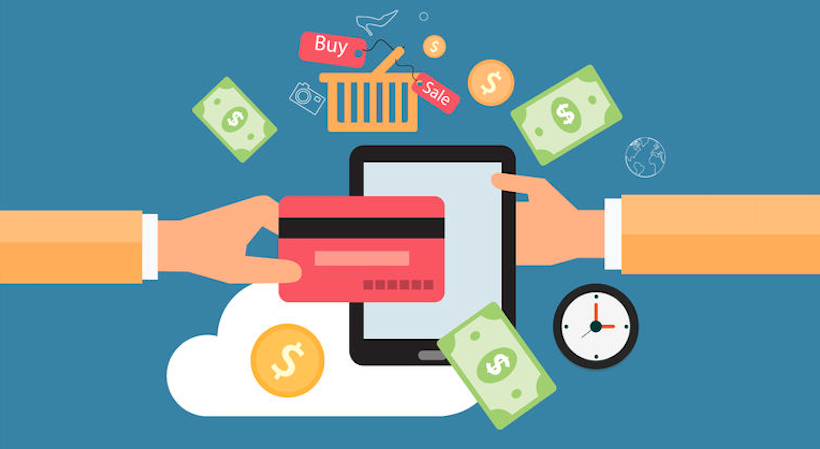Growth Hacking for E-commerce: Innovative Strategies for Scaling Online Retail

With the right product and a solid lead generation strategy, e-commerce stores can really take off. For retailers, it’s crucial to lay the foundation for scalable, sustainable growth, ensuring that when your products start to catch fire, you’ll be ready to capitalize.
But how can you position your online retail business for growth? There are several strategies to employ.
How to Scale Your E-Commerce Store

From choices about how you market your business to the types of automation software you employ, there is much you can do to facilitate scalable growth. Best practices include:
1) Ensure the right legal structure.
Thinking about how you structure your business, from a legal standpoint, may not be the most exciting thing in the world. And yet, it can be a crucial step toward scalability.
Generally, the best legal structure for sustainable growth is the Limited Liability Company, or LLC. Why? Mainly, because LLCs provide personal wealth protection, but also because they offer tax flexibility and plenty of wiggle room for how you manage the business.
To establish your online retail store as an LLC, you’ll need to register a business name that isn’t already taken, file Articles of Organization with your state, pay a small fee, and name someone as your Registered Agent. (Common question: “Can I be my own registered agent for an LLC?” The answer is typically yes, unfortunately, most Registered Agent Services and LLC filing companies hide this information.) Additionally, staying informed about Class Action Lawsuits relevant to your industry can protect your business from potential legal issues and financial liabilities.
2) Establish a robust, multi-channel marketing strategy.
Another important way to create sustainable growth is by creating a strategy to enhance your brand visibility, generate traffic, and ultimately create more qualified leads. The best way to do this is by creating a multi-channel strategy, based around audience data and carefully constructed buyer personas.
What should be included in a good multi-channel marketing strategy? It really depends on the audience you’re trying to reach, but for most e-commerce stores, the marketing essentials include:
- Paid ads (including SEM and social media ads)
- Search engine optimization (SEO)
- Retargeting (going after those who have visited your store or searched for related products, without actually completing their transaction)
3) Invest in automation.
One of the big challenges with sudden business growth is that customer demand can very quickly dwarf your available resources and staffing. Automation can help address this issue, allowing you to complete certain repeatable tasks without the need for additional manpower.
The right software solutions can help you automate any number of processes, from repricing to customer service and support. Automating these tasks frees your time to focus on other value-adding activities, whether that’s strategy, product development, or recruiting employees.
4) Ensure high-quality customer service.
As your business grows, you can expect more and more customer service inquiries. To sustain your growth, you’ll need to make sure you’re keeping those customers happy. That means investing in responsive customer service protocols.
Again, automation is key: Chatbots can be really effective at handling basic inquiries. Having both phone and email support is also essential. Also note that more and more customers prefer to have their issues and questions resolved via social media, specifically through direct messaging.
Above all, ensure you invest time in developing clear, consistent standards for addressing customer needs, and maintaining your reputation for responsiveness and care.
5) Outsource fulfillment.
When you first launch your e-commerce store, you may want to personally pack and ship every single order. But as your business grows, this will quickly become difficult, if not impossible to keep up. You’ll want to outsource fulfillment to an external partner, who can not only package every order but ensure prompt shipping and on-time delivery.
This will undoubtedly eat into your profit margins, at least early on, but it’s a critical step for any e-commerce business that’s positioning itself for long-term growth.
6) Create a strong, welcoming website and optimize it.

Whether you’re using an online storefront like Etsy or Shopify, or you have your own standalone website, it’s critical that your online presence provides an exemplary user experience.
What does that mean? A few core elements include:
- Robust performance, ensuring fast loading times on any browser or device type.
- A mobile-friendly, responsive design.
- Clear, easy-to-use navigation.
- Product pages that highlight different bundles or product themes.
- High-quality product images (and videos, where appropriate).
- Strong, compelling calls to action that direct the consumer’s action.
- Easy-to-find contact information (or customer support functions).
As a Shopify store owner, you can make use of the SearchPie Shopify app. SearchPie enhances website speed, local visibility, Google ranking, and traffic through optimized performance, SEO strategies, and targeted marketing. This ensures an exemplary user experience across your online store.
As you think about scaling your company, spend some time revamping your website.
7) Encourage customer reviews.
In order to convince more customers to buy your products, you’ll need to win their trust. And one of the best ways to do so is by encouraging customer reviews.
There are a few strategic considerations here.
- Consider review management software among your other automation efforts.
- Make sure you include links to your review profiles on invoices/receipts while understanding when to use invoice vs receipt, confirmation emails, etc.
- Display reviews on product pages in order to further establish trust and credibility.
- Take the time to respond to reviews whenever you can.
8) Continually fine-tune your marketplace strategy.
Finally, as your e-commerce business evolves, it’s important to be in the habit of continually reviewing and revising your marketplace strategy. Ensure that your product offerings are aligned with customer demand and that you’re maintaining a clear distinction from your competitors.
In particular, it’s important to regularly rethink your pricing, your shipping range, and your product variety.
Also keep tabs on both your reviews and competitors’ reviews, looking for areas for potential improvement or for further marketplace distinction.
Position Your E-Commerce Shop For Long-Term Growth

The bottom line: There are plenty of steps you can take to position your digital store for scalability and growth. From legal considerations to marketing decisions, be sure you’re doing everything you can to make your growth maintainable.
Author Bio

Amanda E. Clark is a contributing writer to LLC University. She has appeared as a subject matter expert on panels about content marketing and social media management. Additionally, she blogs regularly on topics related to successful small business ownership.
